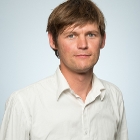Stay in the know on all smart updates of your favorite topics.
Exploring the Future of Data in the Circular Economy: Highlights from Data Dilemma’s!
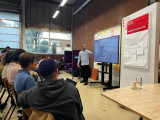
Amsterdam, a city with an ambitious goal of becoming fully circular by 2050, envisions a future where materials are continuously reused, waste is minimized, and resource cycles are closed. Achieving this vision hinges on the availability and analysis of data, which allows us to assess the extent to which materials are used, reused, or wasted. However, this data is often elusive, complex to analyse, and, in some cases, not even recorded. These challenges surrounding circular data were the focal point of our recent event, "Data Dilemma's: Collecting Data for the Circular Economy."
During Data Dilemma's, we explore the possibilities for using data and new technologies to address urban and societal challenges, with a focus on responsible digitalization. The goal is to use data to make cities more safe, clean and accessible. But what happens to all the data that is collected? Which dilemmas do we encounter when we collect (personal) data to improve the city.
Apparently, the topic of this edition of Data Dilemma’s was not only of interest to the Amsterdam Smart City team, since this event was completely sold out. This was no surprise, with the three incredible speakers we had lined up: Mersiha Tepic (municipality of Amsterdam), Maarten Sukel (Picnic), and Joris Bouwens (Metabolic).
Mersiha Tepic: Circular Economy Monitor Amsterdam
Mersiha Tepic, Senior Researcher at the Research & Statistics department of the Municipality of Amsterdam, demonstrated the Circular Economy Monitor Amsterdam. This essential tool tracks Amsterdam's progress towards a circular economy and identifies areas requiring further attention.
The monitor gives interesting insights. For instance, it shows that the environmental impact of food is four times as big as the impact of the built environment, even though the amount of materials used in the built environment is four and a half times larger than for food.
It reveals that food has a very high environmental per kilogram compared to materials from the built environment. This is interesting because it makes the total environmental impact of food much higher than the impact of the built environment, even though the built environment uses four times as much mass in materials than food.
For more information on the circular monitor and all its insights, you can check out their (Dutch) website.
During her presentation, Mersiha also delved into the data dilemma she faces in this project—the scarcity of data from significant commercial entities operating within the city. The lack of data from these key players poses a considerable challenge to Amsterdam's circular ambitions, and Mersiha's work sheds light on the importance of bridging these data gaps.
Maarten Sukel: Data-Driven Precision at Picnic
Our second speaker, Maarten Sukel, a Data Scientist at Picnic Technologies, showcased how the online supermarket Picnic leverages data. He presented an innovative approach that combines traditional data sources with images, written descriptions, and geographical information to predict customer preferences accurately. By doing so, Picnic not only optimizes its supply chain but also minimizes waste, aligning with the circular economy's core principles.
Maarten's insights provided a glimpse into how data-driven precision can be a game-changer in the pursuit of sustainability and waste reduction, and he also gave a convincing sales pitch on why you should be a customer of Picnic.
Joris Bouwens: The Promise of Digital Product Passports
Closing the event was Joris Bouwens, a Project Manager and Senior Consultant at Metabolic's Circular Industries team. Joris shed light on Digital Product Passports and their potential to revolutionize the circular economy. These passports offer a comprehensive digital record of a product's lifecycle and environmental impact, empowering consumers to make informed choices and encouraging responsible consumption and recycling.
Joris's presentation highlighted the immense opportunity presented by Digital Product Passports in getting as much value from used products as possible. To fully illustrate the potential of Digital Product Passport, Metabolic has created a visualization of the data flows in four sectors: Electronics, Chemicals, Apparel, and Construction. You can find these visualizations here.
We extend our gratitude to our amazing speakers for their invaluable contributions and to our engaged audience for their active participation in the discussion.
In the next edition of Data Dilemma’s we will delve into the fascinating world of the underground. What cables, tubes, and other assets can be found there, how is the data on these assets shared, and how can we improve collaboration? We hope to see you there on the 26th of October.
Do you have any suggestions for which Data Dillema's we should uncover next? Let us know in the comments below.
4. Informative plinths

This article is part of the series 25 building blocks to create better streets, neighbourhoods, and cities. Read how design, starting from street-level view contributes to the quality of the urban environment.
Plinths express the nature of activities inside
The visual quality, design and decoration of the plinth, the 'ground floor' of a building, contributes significantly to the quality of the streetscape and to the (commercial) success of the activities that take place at plinth level. This also applies, for example, if the activities of a workshop can be observed through the windows. Blank walls speed up visitors' pace, unless this wall has attractive art. Vacancy is disastrous.
A plinth displays the destination of a building or a part of it (photo bottom left). Fashion stores and suppliers of delicacies depend on its ability to attract buyers. There is nothing against allowing the plinth to expand slightly onto the street - think of beautiful displays of fresh vegetables - if a sufficiently wide barrier-free pedestrian route is maintained.
The total length of streets that must generate customers and visitors must not be too long in order to keeps vacancy to a minimum. This may mean that still profitable shops in streets where the number of vacancies is increasing must consider moving if revitalization of the street is infeasible. The space left behind can best be revamped into space for housing or offices to prevent further dilapidation.
Plinths of non-commercial destinations
The need for an attractive plinth also applies to non-commercial spaces. This may concern information centers, libraries, day care centers for children or the elderly, places where music groups rehearse, etcetera. Co-housing and co-working centers might also concentrate several activities in a semi-public print. In an apartment building, you might like to see an attractive portal through the glass, with stairs and elevators and a sitting area.
Residential plinths
Houses in the more central parts of the city can also have an attractive plinth. In practice, this happens often by placing plants and creating a seat on the sidewalk. The so-called Delft plinths are narrow, sometimes slightly raised additional sidewalks for plants, a bench, or stalling bicycles (photo bottom middle). The worst is if the plinth of a private house is mainly the garage door.
The aesthetics of the plinth
In many pre-war high streets, the plinth was designed as an integral part of the building. In the ‘60s and ‘70s, many retailers modernized their businesses and demolished entire ground floors. The walls of the upper floor, sometimes of several buildings at the same time, rested on a heavy steel beam and the new plinth was mainly made of glass (photo top left). Often a door to reach the upper floors is missing, complicating the premises’ residential function. Initially, these new fronts increased the attractivity of the ground floor. However, the effect on the streetscape has turned out to be negative. In Heerlen, artist and 'would be' urban planner Michel Huisman (the man behind the Maankwartier) is busy restoring old shopfronts together with volunteers and with the support of the municipality (photos top right). In Amsterdam, shopfronts are also being restored to their original appearance (photo bottom right).
Plinths policy
The sky is the limit for improving plinths, as can be seen in the book Street-Level Architecture, The Past, Present and Future of Interactive Frontages by Conrad Kicker and the *Superplinten Handbook</em> , commissioned by the municipality of Amsterdam.
In 2020, a plinth policy was introduced in the Strijp-S district in Eindhoven from a social-economic background. 20% of the available plinths is destined for starters, pioneers and 'placemakers'. Continuous coordination with the target group is important here. In The Hague, 100 former inner-city shops have now been transformed into workplaces for young and creative companies. Differentiating rents is part of the plinth policy too.
Follow the link below to find an overview of all articles.
Demoday #20: Plastic, we love it!
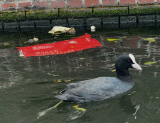
Ons plasticverbruik stijgt nog steeds drastisch
Technisch gezien zijn alle oplossingen voorhanden om ons plasticgebruik drastisch te verminderen in zowel productieprocessen en het voorkomen en/of verwijderen van microplastics in de natuur. Toch verandert er in de praktijk bijna niets. Er zijn veel initiatieven, maar de vraag is of die een daadwerkelijk verschil maken, want als we naar de cijfers kijken stijgt ons plasticgebruik nog steeds drastisch. Sinds 2000 is ons plasticverbruik zelfs verdubbeld!
Waarom verandert er zo weinig?
Hoe kan het dat we, ondanks dat we weten hoe slecht het is voor onszelf en het milieu, er niets significant veranderen aan ons plasticgebruik? En wat kunnen we doen om het plasticprobleem nu wél echt aan te pakken in de regio? Deze vragen stonden centraal tijdens de werksessie ‘Plastic, we love it.’ Tijdens de werksessie hebben de aanwezige strategische denkkracht gemobiliseerd om samen tot nieuwe inzichten komen in de keten van plasticgebruik én nieuwe oplossingsrichtingen met elkaar te bedenken.
Gek, gekker, goed!
Als we doorgaan zoals we nu doen, gaat het dus niet lukken. Daar zijn we het met elkaar over eens. Maar hoe dan wel? Om dat met elkaar helder te krijgen, hebben we eerst een aantal echt onrealistische en misschien zelfs wel onethische oplossingen bedacht. En dat hebben we geweten. Van ‘geen kinderen meer krijgen’ tot aan ‘recyclepolitie op de hoek van elke straat’ en het ‘verbieden van alle plastics’ werden geopperd. En probeerden we zelfs daar nog een schepje bovenop te doen. Natuurlijk niet om uit te voeren, maar wel om daarna weer te kunnen komen tot goede ideeën. We hielpen elkaar en werkten elkaars ideeën en oplossingsrichtingen uit tot realistische en goede ideeën.
Waar ligt jouw invloed?
Maar ideeën bedenken is makkelijk, maar de werkelijke uitdaging ligt bij het komen van idee naar plan naar uitvoering. Dus wat je kun zelf doen? Hoe kan ík een werkelijke bijdrage leveren aan het oplossen van dit complexe vraagstuk? Samen met de groep hebben we gekeken naar daar waar onze eigen invloed zit. De groep kwam met mooie concrete ideeën waar we zelf aan mee kunnen werken en aan kunnen jagen. In de top 3 stonden een bewustwordingscampagne, een plastic politie, lobby richting de politiek door bovenregionaal samen te werken en het belonen van goed gedrag. We kijken terug op een mooie werksessie met waardevolle uitkomsten en kijken uit naar het vervolg en natuurlijk vooral naar een echt resultaat: geen plastic meer in de natuur en in ons voedsel.
Marten Boels, dank voor het inbrengen van dit relevante en belangrijke onderwerp!
Metabolic CEO, Eva Gladek, was nominated for the Big Little Talk at Circularity 23!

Creating a sustainable planet for future generations is essential, and understanding our impacts on nature is a critical step toward achieving this goal.
Unfortunately, measuring impact on nature is complicated and requires specific expertise. We need to combine impact data with geospatial analysis to really see where the different activities along companies’ value chains are taking place, and how those impact nature and biodiversity locally.
By voting for Eva's Big Little Talk, you will Metabolic showcase the importance of nature assessments on the big stage at Circularity 23.
It takes only 1 minute, vote for our video in the link below.
#circularity23 #LinkByMetabolic #natureassessment
Zo maken we de kledingindustrie duurzamer
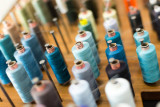
De kledingindustrie is één van de meest vervuilende industrieën op aarde. Het grootste probleem is dat er simpelweg te veel kleding geproduceerd wordt. Hierdoor wordt niet alles gedragen en dragen mensen hun kleding vaak maar een relatief korte tijd. Om kleding een langer leven te geven, is het United Repair Centre (URC) opgericht. Hoe werkt het URC? En wat gaat dit opleveren?
In de podcastserie BoardCast praten we met koplopers uit ons netwerk over de belangrijkste thema’s die de Amsterdamse Metropool bezighouden. Deze aflevering van BoardCast gaan we in op de vraag: Hoe maken we de kledingindustrie duurzamer?
Podcasthost Eline Ronner gaat op zoek naar antwoorden met:
- Thami Schweichler, CEO United Repair Centre en mede-oprichter van Makers Unite
- Willem Swager, Director Finance & Operations EMEA bij Patagonia
- Claire Teurlings, Lead Circulaire Economie bij Amsterdam Economic Board
Meer weten?
We praten onder meer over het United Repair Centre en de activiteiten die Patagonia onderneemt om de kledingindustrie te verduurzamen. Lees ook over hoe Amsterdam Economic Board heeft meegewerkt aan de totstandkoming van het United Repair Centre.
Beluister meer
Beluister ook onze podcast voor innovatieve ideeën en oplossingen over slimmer investeren in talent en lees meer over wat je van deze aflevering kunt verwachten.
Industrial Symbiosis

At the end of its production process, waste or “output” produced by one company can be reborn into a valuable raw material or “input” for another.
This process is called “Industrial symbiosis”.
Learn more about it in the link below.
Digital tools as enablers of a circular economy. The Amsterdam case

In the 19th episode of the Better cities - the contribution of digital technology-series, I address the question of how digital technology can help in the long road to a circular society.
The contribution of digital technology becomes most visible when viewed in conjunction with other policy instruments and actions. That is why in this episode Amsterdam is in the spotlight; this city has been pursuing a consistent circular policy from 2015 onwards.
Why is a circular economy necessary?
European countries together need an average of 2.9 copies of planet Earth to meet the needs for raw materials. But even one Earth has finite resources, and it is therefore obvious that more and more countries aim to be circular by 2050. The circular processing ladder contains a range of options with the lowest step recovery of energy from materials unsuitable for re-use and furthermore recycling, repurposing, remanufacturing, renovation, repair, reuse, reduction, reconsideration to rejection.
A circular economy is an economic and industrial system that eliminates waste and takes the reusability of products and raw materials and the regenerative capacity of natural resources as a starting point, minimizes value destruction in the total system and pursues value creation in every link of the system. In this context, the term cradle-to-cradle design is often referred to. This is done in terms of material flows and the preservation of values, so that in the long term there is no longer any need for an influx of virgin materials. Maersk has developed a cradle-to-cradle passport, a first for the shipping industry, consisting of a database of all ship components, including all the steel, for recycling, reuse and remanufacturing of new ships or their parts.
The Digital Sustainability-memorandum is considering digitization as an enabler on the way to a circular economy. A fourfold distinction is made in this regard: (1) the coordination of supply and demand of materials, (2) facilitating maintenance and repairs, (3) improving the production process, and (4) supporting partners in chain cooperation. Examples of all these options are discussed below.
Amsterdam and the realization of circular principles
Amsterdam's ambition is to use 50% less virgin raw materials by 2030 compared to the current situation. This goal is also very important for achieving its climate targets: 63% of the CO2 emissions for which the city is responsible come from products and materials that are produced abroad. The municipal government can only partly influence this steam. That is why the policy focuses on three areas where the city has most influence, namely food and organic residual flows, consumption and the built environment.
Amsterdam published its first policy plan Amsterdam Circular: Vision and roadmap for the city and regionin 2015. The emphasis was on organic waste and the built environment. It included 75 action points and its approach was positively evaluated in 2018 and a new report was published. It was decided to continue with the same emphasis with the addition of food and consumption. The addition of consumption was obvious, because Amsterdam had been making a strong case for the sharing economy for some time.
Shortly after the publication of the new report, Kate Raworth’s donut-principles made their entrance. Remarkably, none of the previous reports contain a reference to her work on the donut economics. In May 2019, the first fruit of the collaboration with Kate Raworth appeared, building on the report from the previous year. The collaboration resulted in a new report Building blocks for the new Amsterdam Circular 2020-2025 strategy, involving many stakeholders from the sectors, food and organic residual flows, consumption, and construction. It resulted in 17 building blocks, named 'development directions'.
This report was based on the original 2012 publication on the donut economy. However, there turned out to be one pitfall. The original donut model was designed for global-level applications, which, according to Kate Raworth, cannot be directly traced to the urban level. The social implications of behavior in one city not only affect this city itself, but also the rest of the world. The same applies to the ecological aspects.
As a next step Kate Raworth invited representatives from Amsterdam, Philadelphia and Portland to join a task force and discover what a city-level donut model looks like. In each of these cities, dozens of officials and citizens participated in an interactive process. The result was a new model that uses four lenses to view urban activities: The first and second resemble the original lenses but applied at the city level, for example, the impact of local industry on local nature. The third is how activities in a certain city had a negative social impact on the rest of the world, think for example of clothing, produced under poor conditions. The fourth is the impact of local actions on nature worldwide.
These activities resulted in a new publication, The city donut for Amsterdam. It is an instrument for change that can be applied more broadly than to circular policy. In this publication, the new donut model is mainly used as a conceptual model. Instead of exact calculations, snapshots are collected as illustrations.
While city representatives were busy developing the urban donut model, the work towards the circular city continued unabated, resulting in the publication of the final circular strategy for the period 2020 – 2025 and the action plan for the period 2020 – 2021 at almost the same time. In terms of content, these plans are in line with the publication of the building blocks-report from 2019, including the application of the 'old' donut model from 2012.
In the following, I use both the strategy and the action plan to show the role of digital tools. At the end, I come back to the future role of the city donut.
Digital techniques in the circular strategy of Amsterdam 2020 – 2025
I align with the three value chains: food and organic residual flows, consumption and the built environment that are central to the strategy. Three ambitions are formulated for each of these three, further detailed in several action directions, each containing several projects, most with measurable results to attain in 2021. In addition, a couple of projects are described, that bare related to types of companies, institutions and the port. Finally, there are overarching projects, in which I will again pay attention to digitization, also because the role of the city donut will become visible here.
Below I briefly describe the three value chains, name the three ambitions for each, and give references to digital tools that will play a role within each of the three value chains.
Value chain food and organic residual flows
The municipality wants to combat food waste and reuse organic residual flows as much as possible. The role of regionally produced (plant-based) food will be strengthened in line with the Amsterdam food strategy. In realizing its objectives, the municipality participates in an extensive European project, Rumore.
The three ambitions are: (V1) Short food chains provide a robust, sustainable sensory system, (V2) Healthy and sustainable food for Amsterdammers and (V3) Food and organic residual flows.
Examples of digital tools
• GROWx vertical farm is a farm that aims to achieve maximum returns by applying artificial intelligence to the indoor cultivation of food crops, among other things.
• Restore is a measurement system and simulation model for Amsterdam and surrounding municipalities and companies that provides insight into the financial, ecological, and social effects of various forms of composting and bio-fermentation, including the use of biomass.
• The InstockMarket platform will map (surplus) food flows and - if possible - predict them so that the catering industry can anticipate this when purchasing. The data from this project will be linked to the circular economy data platform
• The Platform www.Vanamsterdamsevloer.nl makes all local food initiatives (including food events) visible and residents of Amsterdam can share news about food and urban agriculture.
Value chain consumer goods
The emphasis is on consumer goods that contribute substantially to the depletion of rare raw materials, their production is polluting and often takes place under poor working conditions. In addition, the impact on climate change is significant. The emphasis is on electronics, textiles, and furniture because repair is also possible in each of these cases.
Furthermore, a lot of profit can be made by good collection and reuse through sharing and exchange.
Here too, a multi-year research project funded by the European Commission is important. The Reflow project maps data on flows of materials and develops processes and technology to support their implementation.
The ambitions are :(C1) The municipality is setting a good example and will consume less; (C2) Together we make the most of what we have and (C3) Amsterdam makes the most of discarded products.
Examples of digital tools
• The municipality will develop digital tools within the (purchasing) systems that support civil officers in circular procurement.
• The West-district supports www.warewesten.nl. This website brings together the sustainable fashion addresses of Amsterdam-West.
• Using artificial intelligence, among other things, it is being investigated how the lifespan of various goods can be extended so that they do not end up with bulky waste. This can be used, for example, on the municipal website to offer the option of first offering goods for sale or for giving via existing online platforms before they are registered as bulky waste.
• Indirectly, it is worth noting that the municipality wants to make the use of ICT more sustainable by purchasing less equipment (for example through 'hardware as a service'), extending the lifespan of equipment and reducing its energy consumption.
Value chain built environment
This value chain was also chosen because the municipality has an important voice in what and where is built and in the development of the public space. The municipality itself is also a major user of buildings.
In terms of the built environment, circular construction can be achieved through large-scale reuse of construction waste. By ensuring that buildings can be used for more purposes, their demolition can be slowed down. Sustainable materials can also be used in the design of public spaces – from roads and bridges to playgrounds. In addition, consideration could be given to the climate-adaptive design of the city, resulting in cleaner air and dealing with increasing heat and rainfall.
The ambitions are: (G1): We do circular development together; (G2) The municipality sets a good example and uses circular criteria; (G3) We deal circularly with the existing city.
Examples of digital tools
• Introduction of large-scale application of material passports to have the most complete information possible on material use in all phases of the life cycle of buildings. This is linked to national plans, among other things by providing all materials with an OR code.
• Research into the possibilities of a (national) online materials marketplace. Such a marketplace will influence (local) material hubs, such as the Amstel III construction hub and the creation of circular business cases.
• Providing insight into the supply (demolition, renovation) and demand (new construction, renovation) of circular building materials and thus of circular material flows.
• Creating a digital twin of the public space and the subsurface to be able to furnish and maintain it functionally and circularly.
• Research in digital production due to the rapid development of digital production techniques and their applications, such as robots and 3D printing.
• Research into making the construction, equipment and water and energy consumption of data centers more sustainable.
• Research into which data about residents and users of buildings can be made public and which data should remain private.
The municipality could further simplify the process of permit applications by digitizing everything, enabling applicants to upload the necessary municipal data and construction drawings and calculating the BREAAM score. This applies to both new and renovated buildings.
Overarching theme: Data platform and monitor circular economy
On the road to a circular economy, a lot of data will become available and just as much data is needed to help citizens, companies, and institutions to make sustainable choices and to determine whether the goal of 100% circularity by 2050 is within reach. That is why a data platform and monitor is being developed. This numerically maps all material, recycle, residual and waste flows that enter, leave, and go around the city. This also makes it possible to calculate the impact on CO2 emissions. The data from the material passports and the materials marketplace are also integrated herein, if possible. The monitor also includes social aspects such as health, education, and equality. Relevant data will be open and accessible, so that it can be used for the development of new innovations and applications by the municipality and third parties, also to connect with other urban transitions.
The monitor connects to the four lenses of the city donut of Amsterdam and will collect the data that is currently missing to provide full quantitative insight. This also concerns the environmental impact of all materials that Amsterdam imports for its own consumption. Where the city donut is currently only a partially quantified, the monitor will continuously provide insight into whether the municipality is staying within the ecological preconditions or where it falls short with regard to the minimum social requirements.
Amsterdam's circular strategy and the resulting action agenda is ambitious and will inspire many other cities. Because many projects are small- and medium scaled, it is not yet possible to assess to what extent the strategy and action agenda help to achieve the targets (50% circularity in 2030 and 100% in 2050). Commitment to the development of the monitor is therefore crucial and the municipality will also have to keep an open eye on the parallel actions that citizens, the business community, the port and other institutions must take to achieve their share. After all, becoming circular encompasses much more than food and organic waste, consumption, and construction.
To document the process of the City of Amsterdam's adaptation of circular policy and the contribution of Kate Raworth, I have put together a brief dossier. This includes references to (copies of) all relevant reports and an indication of their content. This file can be downloaded by following the link below.:
https://www.dropbox.com/s/lntf8izqz7ghvqp/Dossier%20circularity.docx?dl=0
Meet the members of Amsterdam Smart City! Anne-Ro Klevant Groen: ‘It’s very rewarding to work on a solution with Fashion for Good’

Anne-Ro Klevant Groen is Marketing and Communications Director at Fashion for Good, a platform that connects established fashion brands with startups.
“Ever since I was a little girl, fashion has been my passion. But I also know that the fashion industry has a large, negative impact on people and our environment. We need to transform our current take-make-waste model into a circular fashion system. For me, it is very rewarding to work on solutions via Fashion for Good.
We connect sustainable and innovative startups to corporate fashion companies and manufacturers such as Adidas and C&A. Many startups have fantastic ideas for more sustainable fashion, but they don’t yet have the network or financial resources to connect with large companies. Others want to know more about intellectual property or marketing. Our mentors help these startups with tailor-made programs based on their maturity.
Corporations invest in us to help us do our jobs, but they also dedicate teams and time to our programmes. We help them with impact assessments so they can see where they will be most effective, and then we connect them to the startups that fit their goals. C&A, for example, was part of a pilot that used blockchain technology to improve transparency in the organic cotton industry. The technology helps trace the origin of organic cotton, similar to what is already being done with coffee and cocoa. Tommy Hilfiger has collaborated with a startup that makes vegan leather from the pectin in apples. We are also starting our own foundational pilot projects, including one with chemical recycling and another that’s working on developing circular polybags for clothes, such as the bags that are wrapped around our clothing when we order from webshops.”
The Amsterdam ecosystem
“Amsterdam offers us plenty of opportunities. It is a very creative city and home to many of the large fashion house’s headquarters. There’s also a good startup and investment climate. We have a co-working space in the heart of Amsterdam for innovative, sustainable fashion startups and freelancers. It’s a large open space where individuals or companies can rent desks and connect to other members of the Dutch circular fashion ecosystem. We always have some space available, so feel free to contact us if you want to be part of our network.
We are also working on an education program for MBO schools to ensure that the fashion industry’s future workforce understands the need to get rid of that take-make-waste model.
For consumers, we have the Fashion for Good Museum on the Rokin in Amsterdam, where we want to educate visitors so they can make better fashion choices. The museum industry is still fairly new to us, and we would like to get in touch with parties that can help us reach more people. Ultimately, it is consumers who either have to buy less or get to know more about the sustainable apparel our partners are developing, make better decisions and demand a better product.
We publish what we learn about sustainable clothing and textiles in our website’s Resource Library. It’s accessible to everyone—free of charge—so startups don’t have to waste valuable time reinventing the wheel. By working together better, we work more efficiently and can accelerate our transformation to a circular fashion system.”
If you’d like to get in touch with Anne-Ro, you can find her on this platform.
This interview is part of the series 'Meet the Members of Amsterdam Smart City'. In the next weeks we will introduce more members of this community to you. Would you like show up in the series? Drop us a message!
Interview and article by Mirjam Streefkerk
Reimagining our relationship with land through regenerative agriculture.
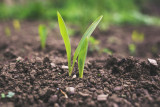
The term regenerative agriculture is popping up more and more often in news and articles. Often mentioned as the key to agricultural green transition, important for carbon sequestration purposes… but what is it exactly?
Regenerative farming, or farming in line with nature, also known as restorative agriculture or eco-agriculture, is a nature-based solution, and it is significantly different from organic farming.
Learn more from this article.
How to create a sustainable bioeconomy
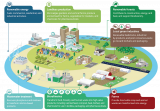
Today the bioeconomy is everywhere: We see it in the clothing we wear, the packaging that comes to our house daily, the house we live in, the food we eat, and the energy that fuels our life.
For the bioeconomy to truly be sustainable and circular, it must meet certain conditions:
• Using fundamentally renewable biological feedstocks
• Maximizing the varied types and cycles of biological resources
• Contributing to the biological cycle
Learn more from this article.
Green food walking trail in Arnhem
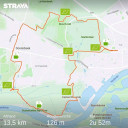
Green consumers engage green growers in the green food trail around the city of Arnhem, The Netherlands.
FASHION FOR GOOD MUSEUM LAUNCHES AUDIO TOUR

From Wednesday July 28th, the Fashion for Good museum features a new audio tour narrated by Dutch rapper Dio. In the tour, visitors can listen to Dio explain the rise of fast fashion, why sustainable fashion is so important for people and planet, and what kinds of natural materials can be used to create the fashion of the future. The tour is in Dutch and is free to all visitors to the sustainable fashion museum on the Rokin in Amsterdam.
The Fashion for Good Museum audio tour is made possible with the support of the Kickstart Cultuurfonds.
Ready to meet the winners of the No Wast Challenge and their ground-breaking ideas?

Ready to meet the winners of the WDCD No Waste Challenge? Earlier this evening, a total of 16 ground-breaking ideas were selected for the top prize, representing a wide range of strategies for reducing waste and its impact on the planet. Each winning team will now gain access to €10.000 in funding and an extensive development programme designed to launch their ideas into action.
“The quality and range of entries we’ve seen in this Challenge is remarkable,” comments Richard van der Laken, co-founder and creative director of What Design Can Do. “In a turbulent year, it’s particularly inspiring to see that the creative community is willing and able to break away from decades of linear thinking and bad design. I’m hopeful that others in the industry will follow their lead.”
Revolutionizing the the taking and making
The winners were determined by an international jury who reviewed every project from a list of 85 high-potential nominees. Among the ideas to take home the top prize are solutions that focus on the production process – aiming to revolutionise the taking and making of all the things we use and eat. Sustrato (Mexico), for example, combines traditional craft, contemporary design and waste from the pineapple industry to develop a range of sustainable bioplastics. Modern Synthesis (UK) makes use of a similar waste stream, this time from apple farms, to feed microbes that grow fully circular fibers for the fashion industry.
Adressing the underlying problem of consumerism
Meanwhile, other winners are unified by their desire to uproot entire value systems. These projects are looking to prevent waste by addressing the underlying problem of consumerism. Reparar.org (Argentina) for example, is a service which connects individuals to local cobblers and repair shops, working to promote a culture of care and the right-to-repair. Similarly, Project R (Japan), is a community centre that empowers citizens to learn about circular techniques and lifestyles. Together, these winners suggest inventive ways for us to reconcile what we want with what the planet needs. In doing so, they also help to redefine design as a tool that can be restorative and regenerative, instead of merely productive or destructive. Congratulations to all!
ABOUT THE NO WASTE CHALLENGE
What Design Can Do and IKEA Foundation launched the No Waste Challenge in January 2021, calling for bold solutions to address the enormous impact of waste on climate change. The competition was open to innovators everywhere, and offered three design briefs tackling different aspects of our take-make-waste economy. In April, the open call ended with an exceptional 1409 submissions from creatives in more than 100 countries. As part of the No Waste Challenge award package, sixteen winners will now enter a development programme co-created by Impact Hub, which will propel their projects through 2022.
Learn more about the No Waste Challenge at: nowaste.whatdesigncando.com
Circulaire fashion wordt het nieuwe normaal!
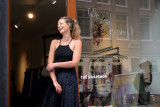
We leven in een tijdperk van 'fast fashion', waarin we vallen van de ene trend in de andere. We dragen een paar keer dat toffe jasje, waarna deze onderin de kast verdwijnt of zelfs wordt weggegooid. Monique Drent pakt deze symbolische 'klerezooi' aan met The Swapshop. In deze winkel lever je jouw kleding in, en kun je met je verdiende punten of 'swaps' weer een tweedehands outfit scoren!
Ik de Swapshop kun je jouw kleding inleveren en hier krijg je punten voor. In de winkel kun je met deze zogeheten ‘swaps’ en een klein bedrag aan servicekosten een ‘nieuwe’ tweedehands outfit scoren.
‘Je draagt bij aan het verkleinen van de afvalberg, je verlengt de levensduur en je hoeft minder te produceren. Het is win-win-win!'
Lees in ons interview met Monique wat zij doet voor een duurzaam Amsterdam en welke mooie samenwerkingen zij opzoekt!💚
Note van ASC: Wil je nog net iets meer weten? Laat het weten in de comments.
Stem op De Buitenkans: van grofvuil tot spullen-ruil!
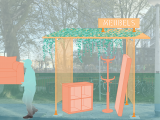
De Buitenkans ordent grofvuilstapels, en beschermt spullen tegen de regen. Bewoners kunnen er hun spullen sorteren, tentoonstellen en onderling uitwisselen, voordat deze worden afgevoerd.
Ontwerpprobleem
Op de stoepen van Amsterdam Noord ligt altijd grofvuil. Dit wordt vaak gezien als gedragsprobleem, maar eigenlijk is het meer een ontwerpprobleem. Lokaal eigenaarschap kan namelijk wel: overal staan ruil-boekenkasten, vaak beheerd door bewoners. Hier en daar staat zelfs een rek met gratis mee te nemen kleren, of wordt een bushokje gebruikt om spullen uit te stallen.
Met De Buitenkans passen we dit idee toe op grofvuil ophaalpunten. Bewoners kunnen er spullen sorteren en beschermd uitstallen. De spullen behouden zo langer hun waarde, en worden makkelijker weer meegenomen door buren.
Net als de normale grofvuillocatie wordt De Buitenkans iedere maand geleegd. In de tussentijd worden er spullen en materialen geruild. Bekijk deze korte video, waarin we het concept verder toelichten.
Boost je buurt!
De Buitenkans staat nu in de finale van ‘Boost je Buurt’. Met jou stem kunnen we max €7.500 winnen. Daarmee willen we een prototype bouwen, zodat we kunnen testen of het werkt.
Stem op De Buitenkans - en bouw mee aan een circulaire buurteconomie!
Je kunt t/m 16 juni, 12:00 stemmen.
Note van ASC: Nog input of tips voor Tessa? Laat ze achter in de comments 💬
Circulair Paviljoen maakt zich klaar voor de Floriade
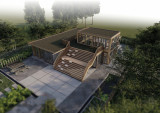
Circulair + Local maakt Circuloco en is een uniek samenwerkingsverband van gelijkgestemde ondernemers. Echte mouwopstropers die het publiek hun trots willen tonen. Doeners die samen een circulair clubhuis gaan bouwen en dit een waardevolle invulling gaan geven tijdens de zes maanden durende Floriade. Circuloco is een afspiegeling van lokaal, creatief en circulair ondernemerschap.
Circulair paviljoen
Het paviljoen ademt het circulaire verhaal. Zowel in uitstraling als in beleving. Materialen die vaak als afval worden beschouwd, krijgen hier een tweede leven. Bovendien wordt het pand volledig demontabel en modulair. Na de Floriade kan het eenvoudig op een andere plek worden opgebouwd. Daarmee draagt het paviljoen bij aan het circulaire karakter van de Floriade.
De trots van lokaal, de kracht van nationaal
Circuloco is een lokaal initiatief, maar wordt een Nederlands feestje. Een showroom als motor voor nationale trots, met een sterke oriëntatie op de Metropoolregio Amsterdam en Almere in het bijzonder. De kracht van het concept is dat het gedragen wordt door vele schouders met een schat aan ervaring, energie en enthousiasme.
O p e n h u i s
Circuloco is een plek voor iedereen. Jouw eigen huis en werkplaats. Want doe je mee, dan is het paviljoen voor een deel van jou. Een open podium waarop je zelf je rol kunt pakken. Je draagt eraan bij en je plukt er de vruchten van. Circuloco is zodanig opgezet dat het ‘plug-and-play’ is, je kunt makkelijk inprikken en meedraaien. Ook is het ‘open source’, transparant in hoe de business en operatie gedraaid wordt.
Denk met ons mee!
Wil je meedenken over de invulling van Circuloco? Aanvullende en nieuwe creatieve ideeën zijn van harte welkom. Laat een berichtje achter in de comments.
Metropolitan Mobility Podcast with Karen Vancluysen (Polis Network)
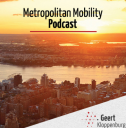
How can local governments deal with (technological) innovations? Listen to the #podcast with Karen Vancluysen of POLIS Network: https://bit.ly/mobilitypod
We zijn nog niet zo goed in afval scheiden
De HvA start project BASSTA naar gedragsinterventies om huishoudens ervan bewust maken of ze op de juiste manier hun afval weggooien en hoe dit te verbeteren.
Chipszakken bij plastic afval, theezakjes bij gft? Afval scheiden wordt niet altijd op goede wijze gedaan, en überhaupt nog te weinig. Dat is zonde, want goed gescheiden afval biedt kansen voor recycling en andere circulaire toepassingen. De Hogeschool van Amsterdam (HvA) start met het project BASSTA een onderzoek naar het verbeteren van het scheidingsgedrag van huishoudens, met een focus op de stedelijke omgeving.
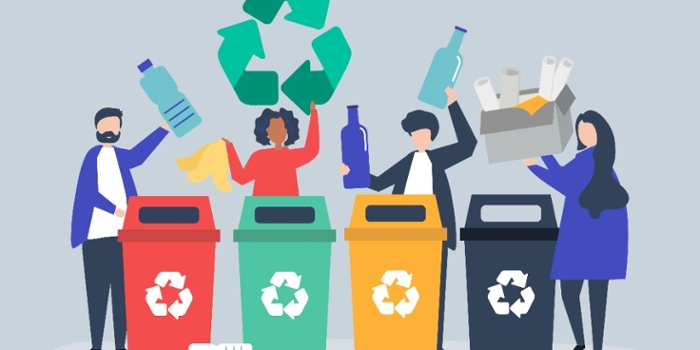
We willen in 2050 volledig circulair zijn. Voor de transitie naar een circulaire economie moet het afval dat ontstaat goed herbruikbaar zijn als grondstof voor nieuwe producten. Een goede scheiding van het afval is een belangrijke voorwaarde hiervoor. Met ongeveer 8 miljard kilo huishoudelijk afval per jaar in Nederland zorgt elk percentage betere scheiding voor enorme resultaten. BASSTA behandelt daarom zowel het verhogen van de scheidingsgraad (de hoeveelheid afval die gescheiden wordt), als het verlagen van de vervuiling van de gescheiden afvalfracties (papier, gft, plastic). Om dat te realiseren, is gedragsverandering nodig.
Automatisch gedrag onder de loep
Mensen gooien hun afval vaak op dezelfde, veelal onbewuste manier weg. BASSTA richt zich daarom op dit automatisch gedrag, vertelt projectleider Maarten Mulder. ‘Door het automatisch gedrag onder de loep te nemen, vormt dit project een belangrijke aanvulling op het bestaande onderzoek naar gedragsinterventies. De nieuwe interventies die het onderzoek opleveren, moeten helpen om het gewoontegedrag te onderbreken en huishoudens ervan bewust maken of ze op de juiste manier hun afval weggooien. Ook voor de mensen die nu nog niet (graag) afval scheiden. Met een duidelijke uitleg hoe en waarom deze interventies werken, is het streven dat zoveel mogelijk Nederlandse stedelijke gemeenten hiermee aan de slag gaan. Zo kunnen ze betere bronscheiding realiseren.’
Dagboek van huishoudens
De interventies worden ontworpen en getest in nauwe samenwerking tussen industrieel ontwerpers en gedragspsychologen van de HvA. Mulder: ‘Middels dagboekstudies bij bewoners thuis analyseren we op welke momenten het automatisch gedrag veranderd kan worden. In de zomer verwachten we de resultaten. Hiermee kunnen we de ‘customer journey’ schetsen: het in detail weergeven van het proces van afval weggooien. Vervolgens ontwerpen we de gedragsinterventies die we gaan testen in verschillende steden. Dat zal begin 2022 gaan gebeuren.’
Samenwerking binnen de HvA
BASSTA is een samenwerkingsproject van Centres of Expertise Urban Technology en Urban Governance and Social Innovation. De verbonden lectoraten Circulair ontwerpen en ondernemen & Psychologie voor een Duurzame Stad onderzoeken en ontwikkelen innovaties om tot een circulaire economie en maatschappij te komen.
Diverse praktijkpartners zijn bij het onderzoek van belang en betrokken. Gemeenten zoals Amsterdam, Rotterdam en Utrecht zijn aangesloten om met bewoners de interventies te testen. Ook helpen stuurgroepen als Rijkswaterstaat en branchevereniging NVRD het onderzoek verder. Daarnaast brengen ROVA, De Afvalspiegel en Giraf Results expertise in rondom afvalinzameling, en verspreiden Milieu Centraal en VVM de resultaten.
Heb je vragen of wil je meer weten? Benader projectleider Maarten Mulder. En blijf via de projectpagina van BASSTA op de hoogte van de ontwikkelingen.
dhr. Ir. M. Mulder
Projectleider en onderzoeker rondom afval, duurzaamheid en de circulaire economie
m.mulder3@hva.nl | T: 0611391085
Ga naar detailpagina
Meer informatie
- Project BASSTA
- Centre of Expertise Urban Technology
- Centre of Expertise Urban Governance and Social Innovation
- Lectoraat Circulair ontwerpen en ondernemen
- Lectoraat Psychologie voor een Duurzame Stad
Metropolitan Mobility Podcast met Maurits van Hövell: van walkietalkies naar het Operationeel Mobiliteitscentrum

“Voorheen werd er gewoon rondgebeld: ‘Wij zitten in de instroom van de ArenA. We hebben nu 20.000 man binnen. Hoe gaat het bij jullie op straat?’” In de achtste aflevering van de serie A Radical Redesign for Amsterdam, spreken Carin ten Hage en Geert Kloppenburg met Maurits van Hövell (Johan Cruijff ArenA). Hoe houdt je een wijk met de drie grootste evenementenlocaties van het land, bereikbaar en veilig? Ze spreken elkaar in het Operationeel Mobiliteitscentrum over de rol van de stad Amsterdam, data delen en het houden van regie. A Radical Redesign for Amsterdam wordt gemaakt in opdracht van de Gemeente Amsterdam.
Luister de podcast hier: http://bit.ly/mvhovell
Robot maakt Johan Cruijff ArenA-balie van resthout
Studenten en onderzoekers van de HvA Robot Studio ontwikkelden voor Johan Cruijff ArenA een circulaire ontvangstbalie
'Binnenkort gaan we robots vragen om objecten te produceren uit resthout volgens onze ontwerpkeuzes', verklaart Marta Malé-Alemany, leider van de Robot Studio en hoofddocent Digitale productie aan de Hogeschool van Amsterdam (HvA). Samen met haar multidisciplinaire team (van architecten tot ingenieurs en tech-experts) en projectpartners onderzoekt de Digital Production Research Group (DPRG) hoe robots afvalhout kunnen verwerken tot nieuwe objecten. Het resultaat is een ontvangstbalie voor de Johan Cruijff ArenA. 'De eerste stap naar grootschalige en geautomatiseerde verwerking van resthout is gezet. ‘Deze aanpak biedt kansen voor de circulaire economie’, aldus Marta Malé-Alemany.
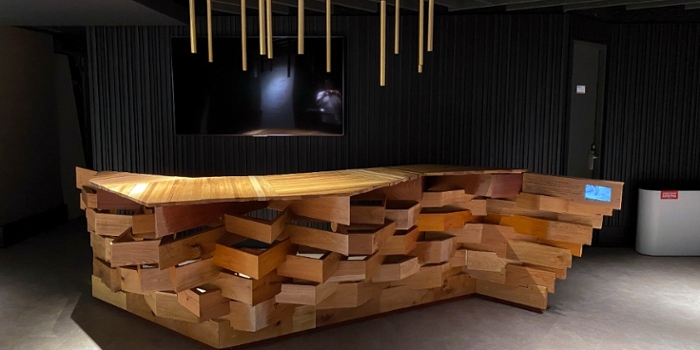
Fotocredits: Sander Heezen
Resthout is een complexe materiaalstroom, omdat het een gevarieerde verzameling overgebleven stukken hout is; grote, kleine, lichte, donkere en heel verschillende vezelpatronen. Bestaande technieken zijn niet geschikt om dit materiaal te bewerken, vanwege het ontbreken van standaardeigenschappen. Het komt dus neer op handmatig werk dat altijd (te) duur is. Gevolg: het materiaal belandt als afval in de open haard. 'Jammer, want het is nog steeds waardevol hout', zegt Malé-Alemany.
‘CONVERSATION-PIECE’
Alle reden voor de DPRG om bij de Robot Studio onderzoek te doen naar de verwerking van resthout door middel van computationeel ontwerp en robotproductie. Het eerste experiment was een loungestoel, gemaakt van hout verzameld bij afvalscheidingsstations. Een ‘conversation-piece' noemt Malé-Alemany het. 'Je hebt showcases zoals deze nodig om belanghebbenden te inspireren en het onderzoek verder te brengen.' Dat werd duidelijk toen Frank de Leeuw, coördinator duurzaamheid van de Johan Cruijff ArenA , de HvA bezocht: 'In de Robot Studio rook je bij binnenkomst gelijk de fijne geur van het resterend hardhout. We vonden het zo zonde om dit mooie materiaal te verbranden. De loungestoel liet ons de mogelijkheden zien van digitale productie om dit soort hout een nieuwe bestemming te geven. Voor ons: een circulair interieur in het stadion.'
ONTVANGSTBALIE IN DE SKYCLUB EN HOUSE OF LEGENDS
De Leeuw en zijn vaste leveranciers (ontwerpers en aannemers) besloten samen met de DPRG om een circulaire ontvangstbalie te creëren voor de nieuwe Level 6 Skyclub en House of Legends in het stadion. Antoine Pruyn, teamleider bij Heineken Interior Design: 'We ontwerpen op papier en wilden meer weten over deze technologie. We begrijpen de waarde van het materiaal en willen hergebruik bij onze klanten stimuleren.'
Voor interieurbouwer Nijboer was het een mooie kans om tegen een betaalbare prijs met high-end hardhout te gaan werken. Houthandel Amsterdamsche Fijnhout leverde het materiaal voor de balie; overgebleven stukken niet-verontreinigd hout van hoge kwaliteit, die overblijven na het zagen van grotere planken. Het zijn restanten hout die normaal als afval worden gezien en in de open haard verdwijnen. De DPRG ontwierp de balie samen met Lizzy Kroese, HvA-afstudeerder Product Design.
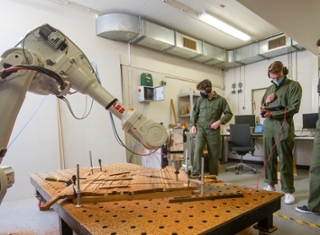
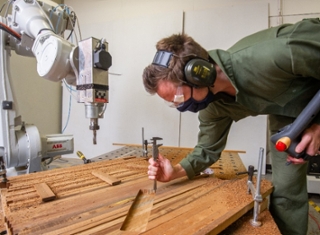
Fotocredits: Sander Heezen
ROBOTS AAN HET WERK
De opdracht was voor de HvA een uitgelezen kans om haar onderzoek naar digitale productie voort te zetten. 'De technologieën die we hebben geïntegreerd en ontwikkeld om de balie te produceren, zijn essentieel om grootschalige en geautomatiseerde verwerking van resthout mogelijk te maken', zegt Malé-Alemany trots. 'Het innovatieve aan onze aanpak is dat we technologieën zoals 3D-scannen en CNC (computergestuurd) frezen integreren in een continue workflow, met behulp van onze robots. Terwijl CNC-frezen vooral wordt gebruikt om vlakke oppervlakken te bewerken, kunnen robots deze techniek toepassen op objecten om elke gewenste vorm te creëren.'
MATERIAAL ALS UITGANGSPUNT
Malé-Alemany: 'Afvalmateriaal leidt hier een nieuw ontwerpproces. Vaak wordt eerst het ontwerp gemaakt en daarna pas gekeken naar het materiaal. In dit proces begint de robot met het 3D-scannen van de eigenschappen van het beschikbare resthout, zoals maat, vorm, kleur. De gegevens worden opgeslagen in een database en geïmporteerd in het 3D-ontwerp, dat zich aanpast aan het beschikbare hout. Zo ontstaan unieke objecten, afgestemd op de houtafmetingen en kenmerken. Zo werd voor de ontvangstbalie het hout gesorteerd op maat en kleur, wat zorgt voor een unieke baliestructuur en kleurverloop. Een proces dat met de hand te intensief en duur zou zijn.'
MEERDERE WAARDECREATIE
De ontvangstbalie in de Johan Cruijff ArenA is een bewijs dat het gebruik van robots voor materiaalhergebruik een nieuw en belangrijk potentieel voor de circulaire transitie is. Bovendien zijn de projectpartners tevreden met het resultaat en willen ze de ontwikkelde technologie verder implementeren. Malé-Alemany ziet het als het begin van een ontdekkingsreis: 'In de toekomst bepalen ontwerpers impactdoelen, in plaats van de vorm van een specifiek object; we krijgen meer algoritmen en robots, die ontwerpen kunnen genereren en produceren op basis van bestaande materialen; en wanneer we meer vanuit de waarde van allerlei (afval)materialen denken, kunnen we gemakkelijker duurzame objecten creëren om circulariteit te ondersteunen.’
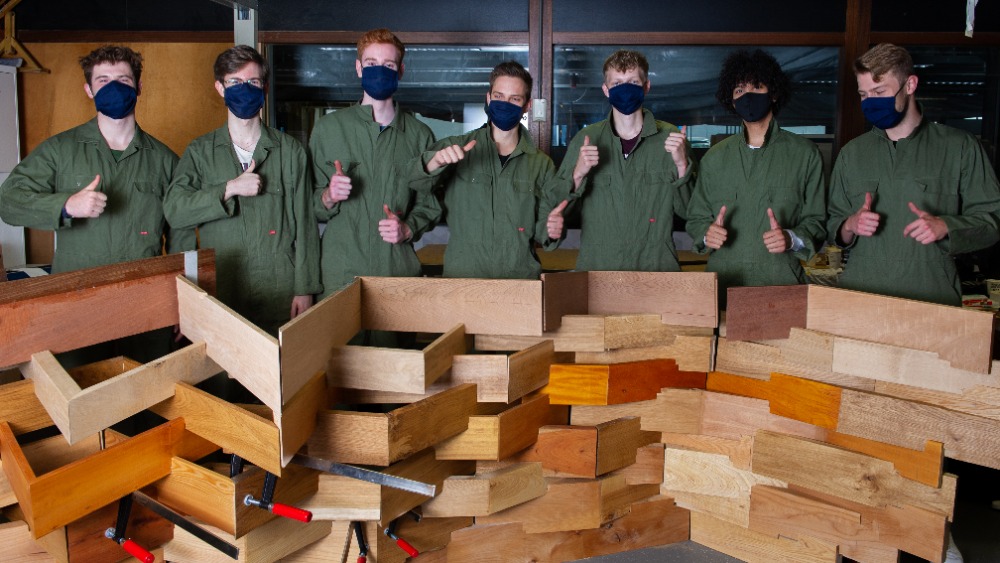
Fotocredits: Sander Heezen
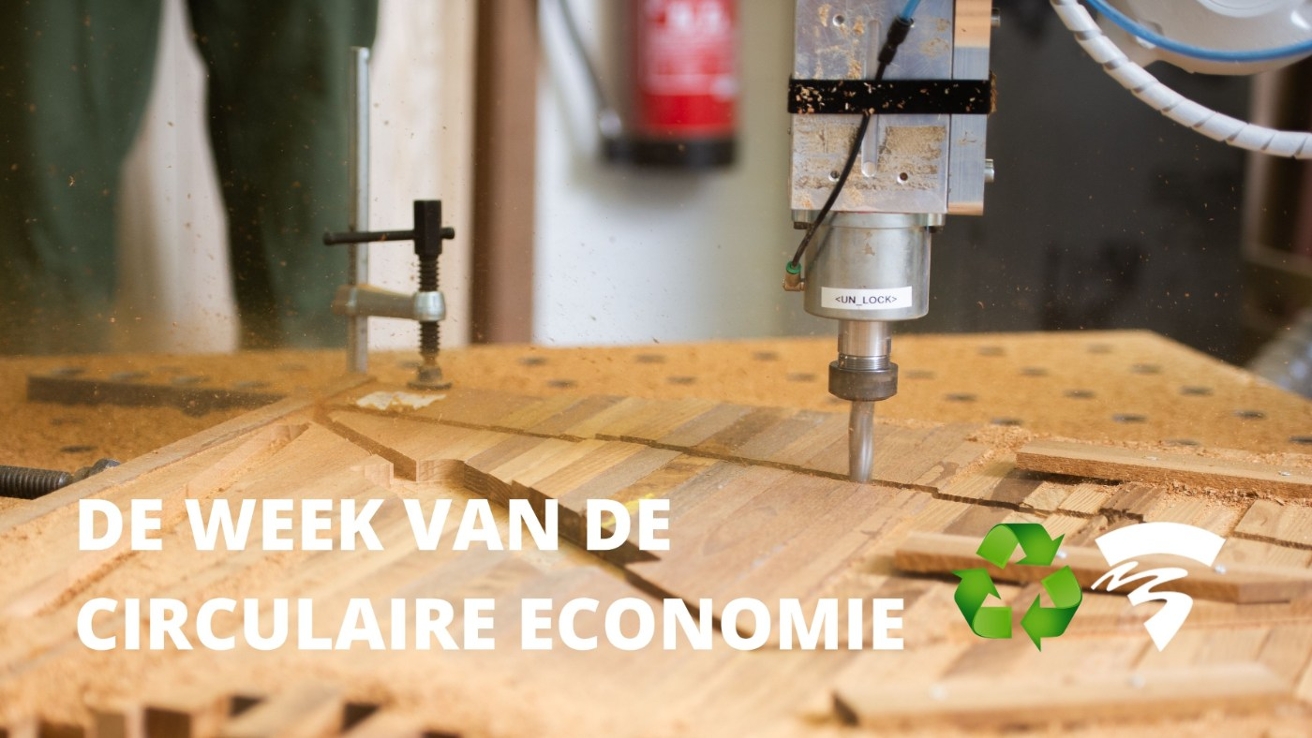
HvA & de Week van de Circulaire Economie
Hoe versnellen we de circulaire transitie? In het kader van de Week van de Circulaire Economie staan de Digital Production Research Group en het lectoraat Circulair ontwerpen en ondernemen van Centre of Expertise Urban Technology en Faculteit Techniek in het teken van een andere kijk op produceren én consumeren. Dagelijks licht de HvA onderzoeken, masterclasses en studentenprojecten uit die de transitie naar circulaire steden een boost geven.
Stay up to date
Get notified about new updates, opportunities or events that match your interests.
